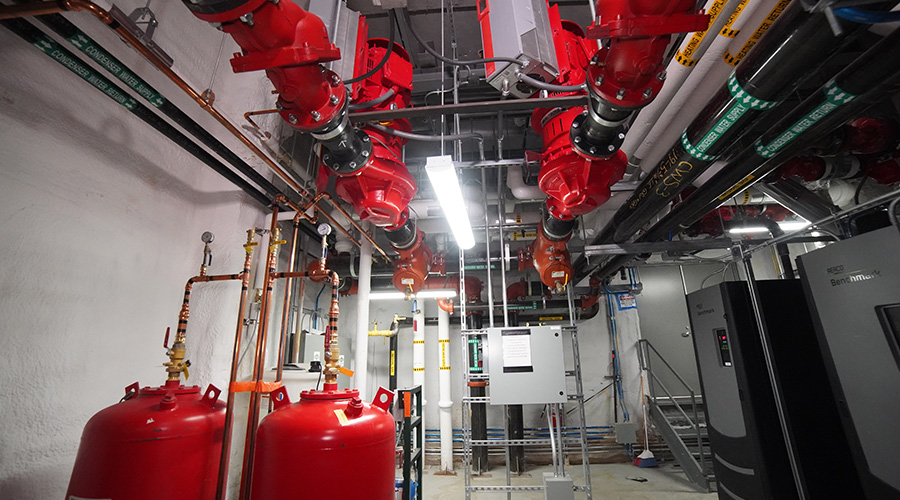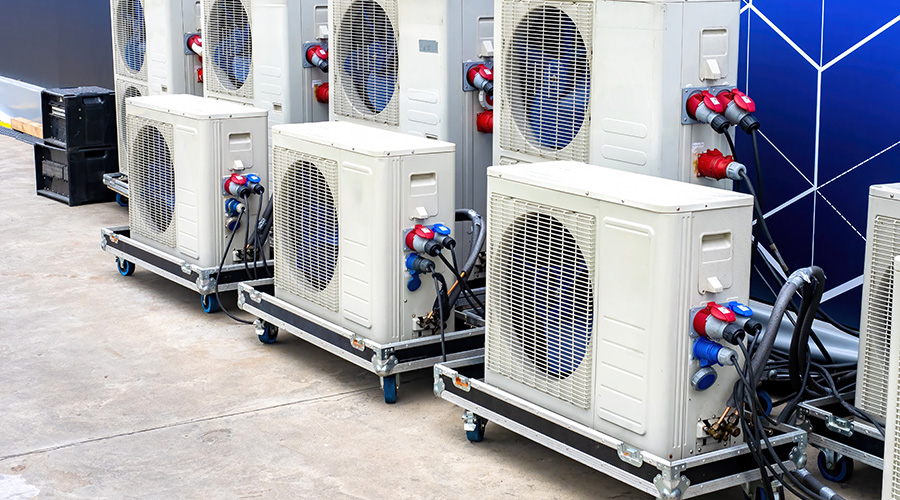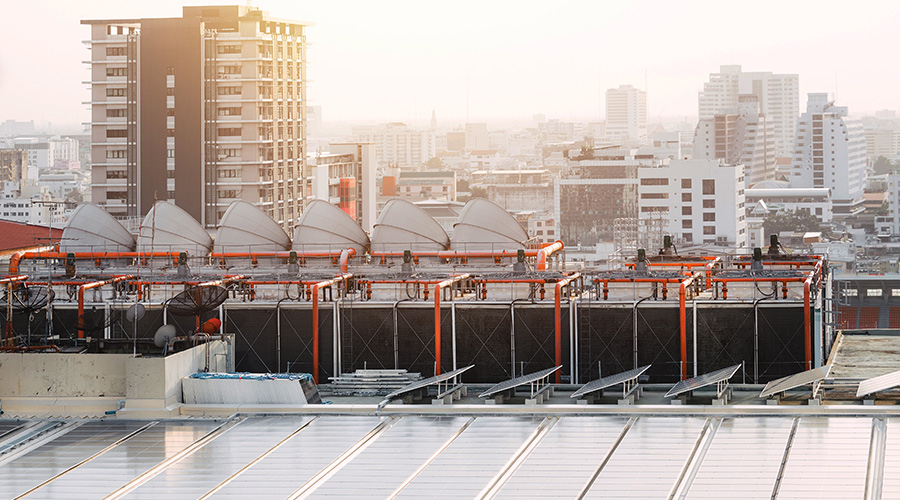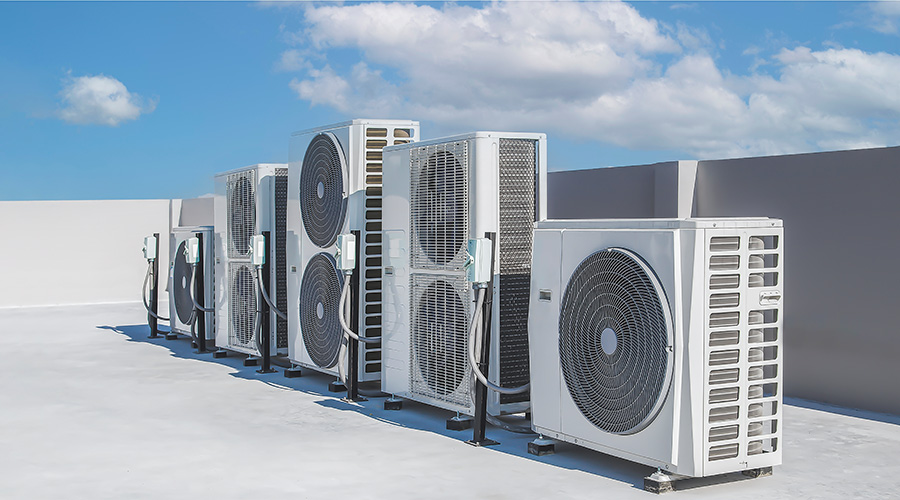How AI Can Help Improve MEP Design for Efficiency, Cost Savings
Facility managers are finding that MEP design that reduce greenhouse gas emissions produce cost savings, among many other benefits.
The mechanical, electrical, and plumbing (MEP) equipment installed in facilities, among the largest and most complex systems in any building, have a tremendous impact on energy use and how rapidly organizations meet carbon emissions goals.
While many facility managers have prioritized low-hanging fruit to drive down systems’ energy use, there’s a much bigger opportunity to meet carbon goals in the MEP design process. The challenge, however, has been to balance these opportunities.
Architectural design has gone increasingly digital in recent years, but the full potential of hyper-efficient 3D modeling is not always employed by the subcontractors designing and engineering energy-intensive MEP systems.
However, that is beginning to change. Some MEP engineering firms have begun to apply advanced computational design tools powered by artificial intelligence (AI). AI is proving to be a critical driver of carbon emissions goals, as it is able to simulate an infinite number of potential MEP system layouts to identify the best solution for balancing all of a project’s specific needs.
These emerging AI-powered MEP design tools can help a facility’s planning, design, and construction (PDC) team confidently select the layout that most efficiently, and cost-effectively, meets all expectations. This might mean selecting the most affordable option for lowering the project’s carbon footprint. By working with design teams that utilize advanced AI technology to improve MEP system coordination and optimization, facility managers can take an active role in driving down both embodied and operational carbon.
Reducing impact on operational carbon
Facilities managers already know that more efficient building system design is the most effective, and often least expensive, strategy for reducing operational carbon. However, in trying to meet a range of goals, conventional engineering strategies often overlook the fact that facilities can achieve significant operational efficiency improvements by reducing the amount of wiring, piping and ductwork used in MEP layouts.
Shorter, more direct MEP layouts lose less energy. They also use less energy-intensive air conditioning to offset the heat that radiates from these components. In most instances, these more efficient runs also lead to lower electrical voltage drops and pressure drops.
All of this translates into tremendous energy savings. A 2019 report from the American Council for an Energy-Efficient Economy found that energy-efficiency measures alone can reduce nearly one-half of all greenhouse gas emissions in order to come close to eliminating such emissions entirely in the U.S. by 2050. We’ve seen direct evidence that optimized MEP distribution can drive a 10-30 percent decrease in energy usage over conventional processes.
More direct layouts mean less embodied carbon
Of course, there’s another major benefit to having shorter runs. The shorter, more direct MEP layouts derived from AI-driven MEP design tools use less material than runs designed using conventional methods.
This can mean a significant decrease in the embodied carbon generated from the mining of raw materials as well as carbon emissions generated in material fabrication. In some cases, the AI-powered design software can determine whether it might be more cost-effective to meet design goals by reutilizing existing components, which can further lower embodied carbon.
Architecture 2030 predicts that embodied carbon will be responsible for nearly one half of the total new construction emissions between now and 2050, if current design practices don’t adapt to lower carbon emissions from buildings. While operational carbon emissions can be reduced over time by improvements made by the facilities department, embodied carbon cannot be changed after the building is erected. It’s critical to consider the amount of material being utilized and identify less wasteful strategies during design.
A 2019 report from the Carbon Leadership Forum sought to establish a likely estimate for the embodied carbon impacts for MEP components, primarily for commercial office buildings in the Pacific Northwest. The report noted that, because MEP systems are typically replaced every 10 to 20 years, the accumulated impacts of these systems can be significant. Overall, the researchers determined, the environmental impacts of MEP components are significant, averaging at 60 kg carbon dioxide equivalent emitted per square meter (CO2 e/m2) in the first year of operation, and doubling by year 15.
We’ve seen this in action. As one example, we developed a case study of a large public school system that was constructing a 122,000-square-foot elementary school by designing an MEP system that prioritized meeting carbon reduction goals along with better serving its budgetary demands.
Applying AI-driven software solutions to the MEP design generated an option that proved to save a total of 6,400 kg of embodied CO2 over the conventional design option. This was the direct result of a design that reduced the linear feet of copper piping, conduit and wire as well as steel and insulation used within HVAC ductwork. An added advantage of this improved MEP distribution plan was that it led to a nearly 12 percent reduction in cost as well.
Strike the right balance
As noted in the example above, cost savings are directly tied into these carbon reduction goals. In some cases, MEP systems may make up more than a third to one-half of the total project costs, so more direct layouts can make a dramatic impact on a building’s overall upfront costs. This can allow facility managers to allocate more funds to address other opportunities for reducing their carbon footprint.
Selecting better performing systems is a clear step toward reducing carbon emissions. However, the reality is that most facilities are operating within tight budget constraints and must balance better performance with cost among many other demands. As these requirements mount, and become increasingly complex, MEP engineers tend to make compromises on system quality or long-term operational costs in an effort to meet other more pressing goals.
Advanced design strategies can better ensure that systems aren’t making a compromise where it can’t be afforded. With support from the right design partners, buildings can better balance organizational goals with global environmental needs.
Gregory Schnackel is President and CEO of Schnackel Engineers and is the lead architect and principal designer of the company’s revolutionary Artificial Intelligence design software, which not only automates the design of all MEP systems, but also optimizes the design of those systems for minimum construction cost and maximum value.
Related Topics:












